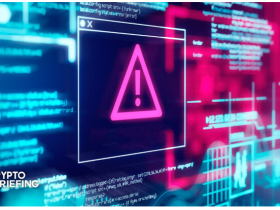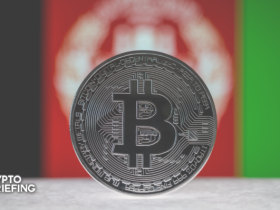Introduction
The cryptocurrency typical internet user can only access the most fundamental features of the worldwide web. A lot of the internet is unexplored territory. In most cases, people’s online activities are monitored by administrators, ISPs, and governments.
On the other hand, there are many corners of the web where users can engage in their favorite pastimes without having to reveal any of their personal details to the service provider. Bitcoin and other cryptocurrencies that support the DeFi ecosystem are now standard fare in the underground economy.
When asked to define the Dark Web, what do you mean?
The “dark web,” also known as the “darknet,” is the hidden, lawless underbelly of the internet. It is not inaccurate to compare the dark web to international waters, where no nation’s laws apply.
The infrastructure of the World Wide Web, which the vast majority of people are able to access and use, was constructed atop the underground web. The dark web is a place where computer hackers and coders can do their work without worrying about being tracked.
The Seeds of the Deep Web
You could say that dar kweb, the precursor to the dark web, has been around for as long as the internet has. The dark web is accessible to anyone with an internet connection; however, certain pieces of software and a carefully calibrated setup are required. It’s important to remember that hackers abound in the dark web, and they can easily steal user information.
Therefore, users should exercise caution before exploring the dark web. In technical terms, the dark web is a more easily accessible subset of the deep web.
Dark web indexes the entirety of the internet, including all the sites that aren’t visible through a regular search engine. If a hacker uses darknet, they can access sites that are normally blocked by governments.
Peer-to-peer exchange networks, which enable visitors to the dark web to conduct business and communicate with one another, are also widely available. Some of the most well-known networks on the dark web include Tor, I2P, Freenet, and Riffle. In order to protect their users’ anonymity, P2P networks typically employ encryption.
Explain what the Silk Road is.
Silk Market is a top site in the dark web’s directory of websites. The website boasted of being a completely anonymous trading platform. Silk Road users engaged in a wide variety of illicit activities, including operating a black market and facilitating the spread of illicit information and goods.
On Silk Road, criminals can anonymously engage in drug dealing, identity theft, and the sale of illegal weapons, among other activities. Silk Road pioneered the use of the dark web for illegal online commerce and data transfer.
The website debuted in 2011, and since then, it has been run as a covert Tor service. About 100,000 customers were able to use the dark web while it was active. However, in 2013, the FBI decided to shut it down. Ross Ulbricht, the creator of Silk Road, was also captured.
In November 2013, not long after the first Silk Road collapsed, the second version appeared. The FBI also shut down Silk Road 2.0, and its operators were given life sentences in a US federal court. The United States government seized Bitcoins worth about $1 billion during the siege of Silk Road.
Where do the underground web and digital currencies fit in?
The main advantage of the Darknet is that it’s a place where people can engage in any kind of online activity without fear of being caught. To a large extent, the dark web serves a similar purpose to the DeFi ecosystem. It is important to note that most people use cryptocurrencies to guarantee that they can conduct financial transactions independently of the centralized financial ecosystem. So when people started using the dark web, they realized its potential, they created marketplaces like Silk Road.
Silk Road was a marketplace on the dark web where people could buy and sell drugs anonymously. However, when using the real cash transfer and banking network, these transactions were still highly traceable. As a result, cryptocurrency provided a solid groundwork for conducting anonymous, decentralized transactions. The game-changer was the advent of dark web gateways like the Tor browser.
The financial regulators can’t trace these web pages since their data is not stored on centralized or known servers like regular sites. In the same fashion as blockchain, TON sites will be present among randomized distributed nodes and users.
Therefore, rather than needing an IP, the users will need an Abstract Datagram Network Layer protocol that is an intrinsically encrypted digital address. At the same time, the ADN layer will be able to work in sync with HTTP protocols.
Therefore, many people think that TON can become the new dark web that is more inclusive than the existing darknet. At the same time, TON and TOR are both targeted by government officials in Russia. The users of the TON network can also access a built-in cryptocurrency called Gram.
Therefore, the law enforcement agencies in Russia have issued a proposal to ban and block the TON and TOR networks. Meanwhile, Chainalysis cybersecurity analysts claim that many users have already started to use the TON blockchain and their native cryptocurrencies for making transactions.
Most Popular Cryptocurrencies on the Dark Web
When it comes to dark web, many people claim that cryptocurrencies and DeFi have become an integral part the underground web activities. However, in reality, cryptocurrencies are just an easy way to make online transactions more secure for dark web users. Based on the popularity of usage on the dark web, here are some of the top used cryptocurrencies:
Bitcoin
Bitcoin is one of the least private cryptocurrencies present in the blockchain ecosystem. As mentioned before, anyone can access all Bitcoin transactions anytime they want. In technical terms, it means that Bitcoin transactions can be traced back to the IP address of a user. Therefore, it can seem that Bitcoin is not the ideal cryptocurrency for performing illegal or underground transactions. However, it is visible from the example of the Silk Road seizure that a massive amount of Bitcoin was collected by the authorities.
Therefore, it is not wrong to deduct that Bitcoin is indeed one of the most popular cryptocurrencies under use on the underground web also. The right question is why cybercriminals would want to keep using Bitcoin if it is not secure at all. The answer is that, firstly Bitcoin is the most valuable cryptocurrency with a massive price return.
Secondly, it is possible to delink the IP address from the Bitcoin crypto wallet or digital address. As long the cybercriminals have the proper tech backup, they intend to keep using Bitcoin securely.
Monero
Monero is one of the top decentralized and privacy-oriented cryptocurrencies in the blockchain sector. Monero uses three layers of anonymity protocols, namely Stealth Signature, RingTC, and Ring Signature. In terms of ensuring the privacy of a user, it is the best possible privacy insurance in the world at present. Therefore, it is not a big surprise that such a secure cryptocurrency as Monero is the second most popular cryptocurrency on the dark web.
Monero generates a unique cryptographic code for every single coin issue and transaction individually. It means that the investigators have to trace every single token after every single transaction step, which becomes virtually impossible. A report conducted by Chainalysis suggests that Monero is officially the second most used currency on the dark web. An underground survey by Recorded Future also confirms the same.
Litecoin
Recorded Future dark web survey suggests that around 30% of the underground merchants are willing to accept Litecoin. At the same time, the currency is also very popular among Russian hackers. Therefore, it is not wrong to assess that Litecoin is the third most popular cryptocurrency on the darknet.
However, it is interesting to note that Litecoin does not offer any type of privacy benefits for its users. On the contrary, it is even less secure in comparison to Bitcoin. The sole advantage of Litecoin is that it offers faster transactions and has low transaction fees. Hackers can make Litecoin transactions anonymous by using cryptocurrency mixers.
Dash
In the dark web community, Dash is the second most popular cryptocurrency after Bitcoin. Dash coin holders have the ability to stake their tokens for liquidity and receive a yield income thanks to the presence of master nodes.
The majority of American hackers favor Dash. Bitcoin and Dash coins are more convenient to exchange without leaving a paper trail. Thus, it would appear that many underground market merchants who seek to exchange Bitcoin for Dash end up with the latter.
What Actions Have Financial Authorities Taken Against the Dark Web?
Both the dark web and the cryptocurrency community promote decentralized, individualistic lifestyles. It’s only natural that governments around the world would be dissatisfied with the rise in popularity of such platforms.
As a result, various measures have been taken against it by regulatory and law enforcement agencies in various sovereign nations. The United States government began its war on the dark web in 2020, when the decline of the industrial economy made possible the largest ever expansion of online communities and activities.
According to a report by Chainalysis, the popularity of a region’s dark web use directly affects the government’s response to limiting its use. It’s also indicative of the level of governmental oversight and legal constraints on the internet in a given area.
People in areas where censorship is severe are more likely to turn to the dark web as a means of evading or avoiding the law. Thus, the United States, Russia, Germany, the Netherlands, and France have a disproportionate number of users in the dark web.
The Russian Central Bank has proposed giving local financial authorities the authority to identify potentially fraudulent account activity. Meanwhile, American intelligence agencies have implemented a new program that targets those who transact in dark web cryptocurrencies with the goal of imposing new legal restrictions on them.
For similar reasons, the International Criminal Police Organization has partnered with a South Korean intelligence startup called S2W Lab to keep tabs on the dark web. It’s important to keep in mind that despite the best efforts of centralized authorities, the dark web and cryptocurrencies can continue to operate as decentralized systems.
Conclusion
The dark web is commonly associated with illegal activity. The same medium is also instrumental in evading fascist regimes and totalitarian practices of those in authority.
When a journalist is unable to get their hands on the correct information, they can go to the dark web and use cryptocurrencies to keep themselves safe while they continue their reporting. Coincidentally, many people turn to cryptocurrencies in an effort to undermine their governments’ monopoly on the financial system. The dark web and its link to cryptocurrencies have both positive and negative connotations, and both must be taken into account.











 Bitcoin
Bitcoin  Ethereum
Ethereum  XRP
XRP  Tether
Tether  Solana
Solana  USDC
USDC  Dogecoin
Dogecoin  Cardano
Cardano  Lido Staked Ether
Lido Staked Ether  TRON
TRON  Chainlink
Chainlink  Avalanche
Avalanche  Wrapped Bitcoin
Wrapped Bitcoin  Wrapped stETH
Wrapped stETH  Stellar
Stellar  Sui
Sui  Toncoin
Toncoin  Hedera
Hedera  Shiba Inu
Shiba Inu  Litecoin
Litecoin  WETH
WETH  Polkadot
Polkadot  LEO Token
LEO Token  Hyperliquid
Hyperliquid  Bitcoin Cash
Bitcoin Cash  Bitget Token
Bitget Token  Uniswap
Uniswap  USDS
USDS  Wrapped eETH
Wrapped eETH  Ethena USDe
Ethena USDe  NEAR Protocol
NEAR Protocol  Pepe
Pepe  MANTRA
MANTRA  Official Trump
Official Trump  Ondo
Ondo  Aave
Aave  Aptos
Aptos  Internet Computer
Internet Computer  Monero
Monero  WhiteBIT Coin
WhiteBIT Coin  Mantle
Mantle  Ethereum Classic
Ethereum Classic  Bittensor
Bittensor  Cronos
Cronos  Dai
Dai  POL (ex-MATIC)
POL (ex-MATIC)  OKB
OKB 
Leave a Reply